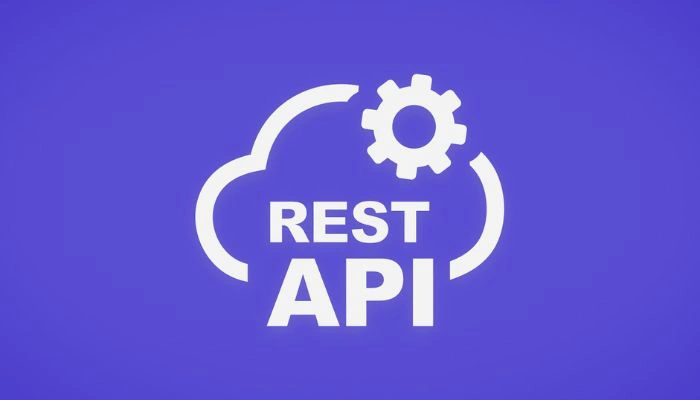Why Readiness Management Increases End User Adoption Exploring the Benefits
Introduction

As technology continues to advance, organizations are constantly implementing new systems and software to improve their operations. However, the success of these projects ultimately depends on whether or not end-users adopt the new technology. Unfortunately, end-user adoption is often overlooked, leading to low adoption rates and failed projects. This is where readiness management comes in.
Understanding the Importance of Readiness Management
Readiness management is the process of ensuring that end-users are prepared and ready to use new technology. It involves identifying potential barriers to adoption and addressing them through communication, training, and support. By taking a proactive approach to readiness management, organizations can increase the likelihood of successful project implementation and end-user adoption.
The Role of Communication and Training in Increasing User Adoption
Effective communication and training are critical components of readiness management. Communication helps to build awareness and excitement around the new technology, while training provides end-users with the knowledge and skills needed to use it effectively. By investing in these areas, organizations can reduce anxiety and resistance among end-users, leading to increased adoption rates and project success.
Key Takeaways
- Readiness management is essential for ensuring end-user adoption of new technology.
- Effective communication and training are critical components of readiness management.
- By taking a proactive approach to readiness management, organizations can increase the likelihood of successful project implementation and end-user adoption.
Understanding the Importance of Readiness Management

As a readiness manager, I understand the importance of ensuring end users are prepared for the implementation of new technology. End-user adoption is a critical component of any technology implementation, and it can make or break the success of the project.
It is essential to recognize that the end users are the ones who will be using the new technology, and their experience will determine whether they embrace or reject it. Therefore, it is crucial to involve them in the process and ensure they are ready and willing to use the new technology.
Readiness management involves working with the business to schedule the timing of the end-user impact and ensuring all dimensions of readiness are considered. This includes ongoing communication across various organization-wide mediums to create awareness, build trust, and foster collaboration.
One of the main reasons readiness management is critical is that it reduces anxiety for end users that will use the system on day one and beyond. When employees are adequately prepared for the changes, they are more likely to embrace the new technology, leading to increased productivity and better overall organizational readiness.
In addition, readiness management can help ensure that the benefits of the new technology are realized. By ensuring that end users are ready for a new technology, it can increase the chances of successful end-user adoption, leading to a more significant return on investment.
Overall, readiness management is a critical component of any technology implementation. By ensuring that end users are ready for the change, it can lead to successful end-user adoption, increased productivity, and better overall organizational readiness.
The Role of Communication and Training in Increasing User Adoption

As a project manager, I understand the importance of managing the project team, monitoring dependencies and risks, and ensuring that tasks are completed on time. However, it is essential to recognize that effective communication and comprehensive training play a crucial role in increasing end-user adoption of new systems.
The Power of Effective Communication
Communication is key to ensuring that end-users understand the benefits of new systems and how they can use them to improve their work. It is imperative to communicate with end-users throughout the entire process, from initial awareness to post-implementation support.
HR and change management teams can collaborate to create a communication plan that includes regular updates, training schedules, and user feedback sessions. By setting clear expectations and sharing relevant information, end-users will feel more engaged and aware of the upcoming changes.
The Impact of Comprehensive Training
Comprehensive training is also crucial to increasing end-user adoption of new systems. Training should be designed to meet the needs of different types of end-users, including those who are less tech-savvy.
By providing adequate training, end-users will be able to understand the new systems' features and benefits and how to use them to improve their work. This will lead to increased user satisfaction and adoption rates.
Project management and customer success teams can collaborate to create a training plan that includes different types of training, such as online tutorials, in-person sessions, and job aids. By providing different training options, end-users will be able to choose the method that works best for them.
In conclusion, effective communication and comprehensive training play a crucial role in increasing end-user adoption of new systems. By collaborating with HR, change management, and customer success teams, project managers can create a change strategy that includes communication and training plans to ensure successful adoption.
Addressing Resistance and Ensuring Project Success

As a Readiness Manager, I understand that resistance to change is a common challenge that organizations face when implementing new technical solutions. However, by taking a proactive approach to addressing resistance, we can increase end-user adoption and ensure project success.
Understanding and Overcoming Resistance
To overcome resistance to change, it's important to first understand where the resistance is coming from. Resistance can stem from a variety of factors, including fear of the unknown, lack of understanding or training, and concerns about how the change will impact job security or workload.
To address these concerns, I work closely with end-users to understand their expectations and concerns. By involving end-users in the process and providing clear communication and training, we can help them feel more comfortable with the change and increase their willingness to adopt the new solution.
Key Factors for Project Success
In addition to addressing resistance, there are several key factors that contribute to project success. One important factor is the use of a pilot program or use case to test the new solution before rolling it out to the entire organization. This can help identify any technical issues or user experience challenges before they become widespread.
Another important factor is tracking and analyzing metrics such as churn rates and ROI. By monitoring these metrics, we can identify areas where the solution is succeeding and areas where it may need improvement.
Finally, it's important to be aware of and mitigate any potential risks associated with the change. This can include risks related to data security, user privacy, or compliance with regulations.
By keeping these key factors in mind and working to address resistance to change, we can increase end-user adoption and ensure project success.
Case Study: SharePoint and End-User Adoption

As a consultant who has worked with numerous organizations to improve end-user adoption of SharePoint, I have seen firsthand the benefits of using readiness management to increase adoption rates. One particular case study stands out as a prime example of how readiness management can lead to successful adoption.
The client, a mid-sized manufacturing company, had recently implemented SharePoint to improve collaboration and streamline business processes. However, after several months, they noticed that usage was low and that end-users were resistant to adopting the new platform. They reached out to our team to help them improve adoption rates.
We conducted a readiness assessment and found that end-users were not properly trained on how to use SharePoint and that they did not understand the benefits of the platform. We recommended a series of training sessions and communication campaigns to address these issues.
The timing of these initiatives was also crucial. We found that end-users were more likely to adopt SharePoint if they were given the necessary training and information before the platform was rolled out. By providing training and information early on, end-users were able to see the benefits of the platform and were more likely to use it.
After implementing these initiatives, we saw a significant increase in adoption rates. End-users were more confident in their ability to use SharePoint and were more likely to use it to collaborate and streamline business processes. Customer satisfaction also improved, as end-users were able to complete tasks more efficiently and effectively.
This case study is consistent with Gartner's research on the importance of readiness management in increasing end-user adoption. By providing end-users with the necessary training and information, organizations can improve adoption rates and achieve their business objectives.
Frequently Asked Questions

What are the benefits of readiness management for end user adoption?
Readiness management can help organizations to achieve successful end user adoption by ensuring that users are prepared for upcoming changes. By providing users with the necessary tools and resources, organizations can help users to feel more comfortable with new technologies or processes. This can lead to increased productivity, improved user satisfaction, and reduced resistance to change.
How does readiness management impact end user adoption rates?
Readiness management can have a significant impact on end user adoption rates. By ensuring that users are prepared for upcoming changes, organizations can reduce the risk of user resistance and increase the likelihood of successful adoption. This can lead to increased productivity, improved user satisfaction, and reduced costs associated with failed implementations.
What strategies can be implemented to support end user adoption?
There are several strategies that organizations can implement to support end user adoption. These include providing users with training and support, communicating effectively with users about upcoming changes, and involving users in the design and testing of new technologies or processes. By taking a comprehensive approach to end user adoption, organizations can help to ensure that users are prepared for upcoming changes and are more likely to adopt new technologies or processes.
What role does readiness play in the success of a solution?
Readiness plays a critical role in the success of a solution. By ensuring that users are prepared for upcoming changes, organizations can reduce the risk of user resistance and increase the likelihood of successful adoption. This can lead to increased productivity, improved user satisfaction, and reduced costs associated with failed implementations. By taking a comprehensive approach to readiness management, organizations can help to ensure that their solutions are successful and that users are prepared for upcoming changes.
Can readiness management improve performance measurement in organizations?
Yes, readiness management can improve performance measurement in organizations. By ensuring that users are prepared for upcoming changes, organizations can reduce the risk of user resistance and increase the likelihood of successful adoption. This can lead to increased productivity, improved user satisfaction, and reduced costs associated with failed implementations. By measuring the effectiveness of their readiness management efforts, organizations can identify areas for improvement and make data-driven decisions to improve end user adoption rates.
How can businesses measure the effectiveness of their readiness management efforts?
Businesses can measure the effectiveness of their readiness management efforts by tracking end user adoption rates, user satisfaction scores, and productivity metrics. By comparing these metrics before and after implementing readiness management strategies, organizations can determine the impact of their efforts and make data-driven decisions to improve end user adoption rates. Additionally, organizations can solicit feedback from users to identify areas for improvement and adjust their strategies accordingly.









